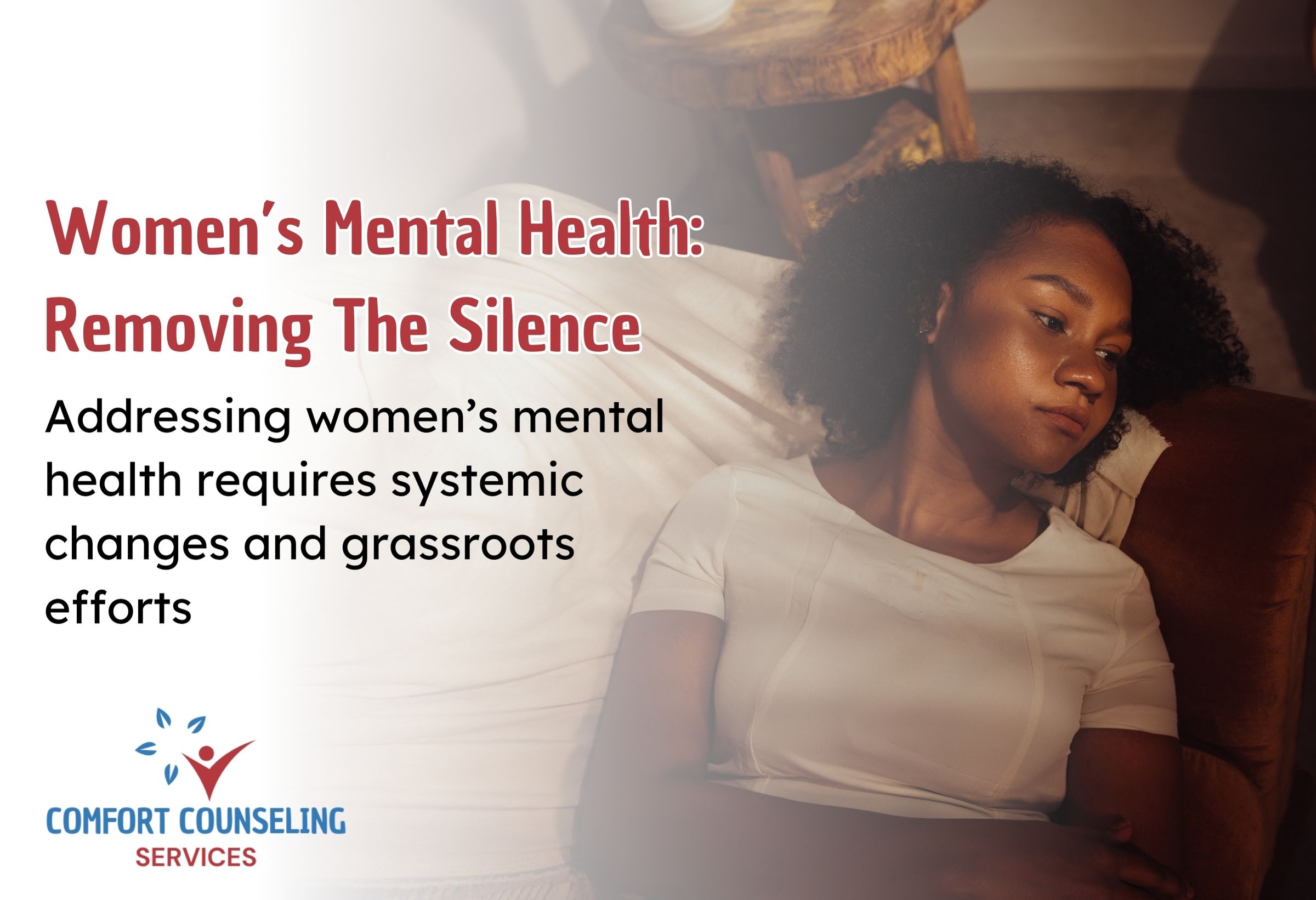Women’s mental health is a multifaceted issue influenced by biological, social, and cultural factors. Despite growing awareness, mental health challenges among women often go unaddressed due to stigma, gender inequalities, and a lack of resources. This article explores the unique mental health challenges women face, the barriers to seeking help, and actionable solutions to improve their well-being.
The landscape of women’s mental health
Women are more likely than men to experience mental health conditions, particularly mood and anxiety disorders (Kuehner, 2017). However, their mental health often remains underreported and undertreated.
- Depression: Women are nearly twice as likely as men to experience major depressive disorder (Albert, 2015).
- Anxiety disorders: Approximately 33% of women are affected by anxiety disorders, compared to 22% of men (McLean et al., 2011).
- Postpartum depression: Up to 20% of new mothers experience postpartum depression, significantly impacting maternal and child health (Gavin et al., 2005).
Key challenges in women’s mental health
- Biological factors
Hormonal fluctuations during menstruation, pregnancy, and menopause significantly affect mental health (Rubinow & Schmidt, 2019). Conditions like premenstrual dysphoric disorder (PMDD) highlight the intersection of biology and mental health. - Social and cultural pressures
Societal expectations, such as caregiving roles and body image standards, place immense pressure on women, increasing their vulnerability to stress, anxiety, and depression (Sweeting et al., 2015). - Gender-Based Violence
Women exposed to domestic violence or sexual assault are at a higher risk of developing PTSD and other mental health issues (World Health Organization [WHO], 2021). - Economic disparities
Financial dependence and pay gaps exacerbate stress and limit access to mental health care for many women (Lund et al., 2010).
Barriers to seeking help
Despite the prevalence of mental health issues, many women face barriers to accessing care.
- Stigma and Shame: Cultural stigma surrounding mental illness discourages women from seeking help (Corrigan et al., 2014).
- Healthcare inequalities: Women, especially in low-income areas, often lack access to affordable mental health services (Patel et al., 2018).
- Underdiagnosis: Women’s symptoms, particularly physical manifestations of mental illness, are often misdiagnosed or dismissed (Martin et al., 2016).
Breaking the silence
Addressing women’s mental health requires systemic changes and grassroots efforts:
- Promote mental health awareness
Public campaigns should highlight the importance of women’s mental health and dismantle stigma. - Expand access to services
Governments and organizations must invest in gender-sensitive mental health services and provide affordable care options. - Empower women through education
Programs that teach women about mental health can help them recognize symptoms and seek timely help. - Provide supportive environments
Employers should offer mental health resources and create family-friendly policies to reduce workplace stress.
Special focus: Postpartum mental health
Postpartum depression remains a critical issue affecting women’s health.
- Screening: Regular mental health screenings for new mothers should be mandatory.
- Support groups: Peer-led groups can provide a sense of community and shared understanding.
- Policy interventions: Extended maternity leave and affordable childcare can reduce stress for working mothers (Dagher et al., 2014).
The role of society
Improving women’s mental health requires collective action from individuals, communities, and governments.
- Community programs: Local initiatives should provide mental health education and resources for women.
- Policy reforms: Policies that address gender-based violence and economic inequalities are essential.
- Global efforts: International organizations must prioritize mental health in women’s health agendas.
Call to action
It’s time to remove the silence surrounding women’s mental health. By raising awareness, reducing stigma, and ensuring access to care, we can create a world where women’s mental health is prioritized and supported.
References
- Albert, P. R. (2015). Why is depression more prevalent in women? Journal of Psychiatry & Neuroscience, 40(4), 219-221.
- Corrigan, P. W., et al. (2014). Stigma in mental illness: Strategies for change. Social Psychiatry and Psychiatric Epidemiology, 49(4), 467-478.
- Gavin, N. I., et al. (2005). Perinatal depression: A systematic review of prevalence and incidence. Obstetrics & Gynecology, 106(5), 1071-1083.
- Kuehner, C. (2017). Why is depression more common among women than among men? The Lancet Psychiatry, 4(2), 146-158.
- Rubinow, D. R., & Schmidt, P. J. (2019). Sex differences and the neurobiology of affective disorders. Neuropsychopharmacology, 44(1), 111-128.
- WHO. (2021). Violence against women prevalence estimates, 2012



